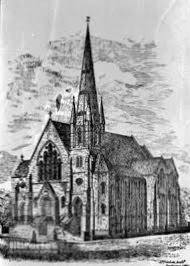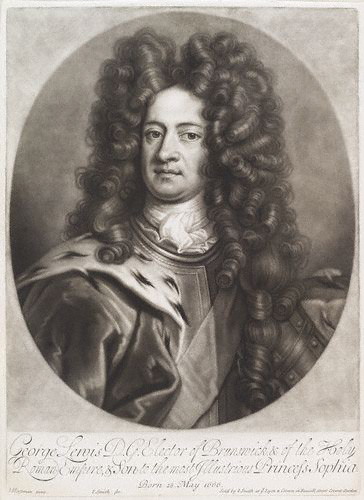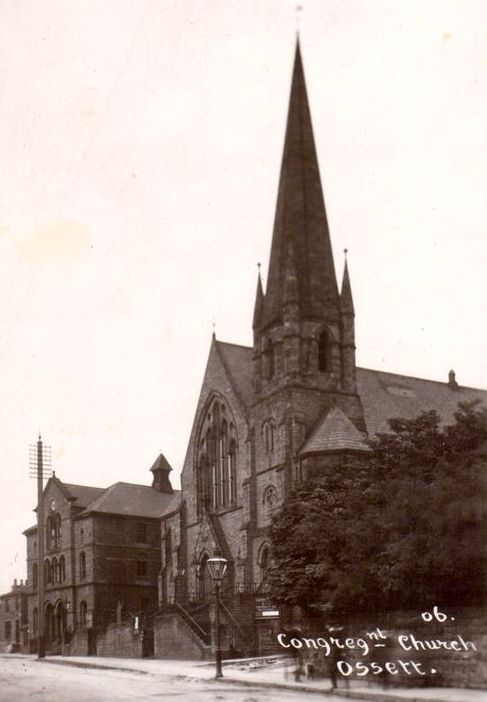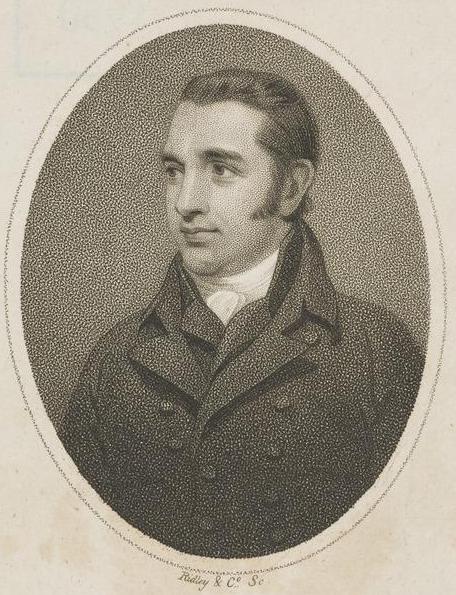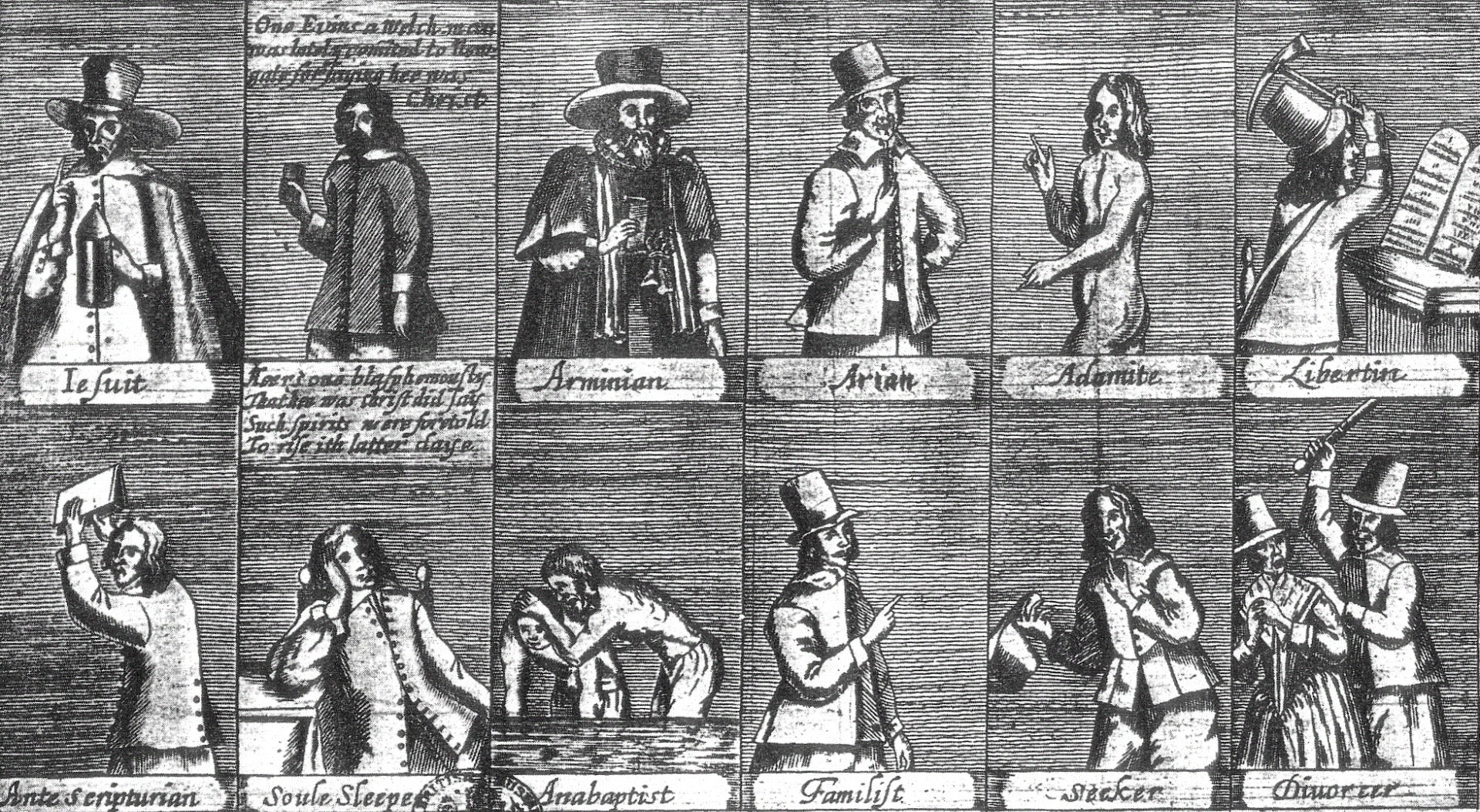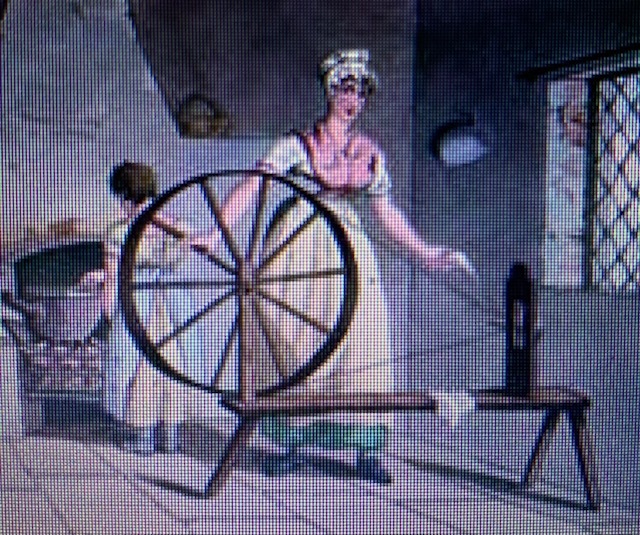
Congregational Church
The Congregational Church was a former chapel located in Ossett, a market town within the city of Wakefield, West Yorkshire, England.
The original building dates from the early 18th century, was expanded several times during it's heyday but was demolished in the last quarter of the 20th century.
From the beginning, the congregation was modified three times on the site and was able to house the faithful for many generations.
Origins & History
In Ossett today there are many places of worship with different forms of service, expressions of Christian faith, and the citizens of Ossett are completely free to go to any or to none of the churches, to ignore their existence or to follow the creeds and practices of any one of them according to personal conscience and conviction without let or hindrance.
During the 17th and early 18th centuries the situation was very different as Ossett was a semi-agricultural village of hardworking people who lived by making cloth and toiling on small scattered farms.
Ossett's population was about 1200 and there was a place of worship: a Chapel of Ease with a curate provided by Dewsbury Parish Church and people were expected to conform to the Church of England.
Nonconformists, whether they were dissident Protestants or Roman Catholics, had suffered severe persecution for many years. There were, nevertheless, groups of Dissenters around Ardsley, Alverthorpe and Wakefield. They were Presbyterians.
Until the Act of Toleration of 1689, attendance at church in England was compulsory and the severity of the religious laws caused much suffering, so it was a serious offence to fail to attend church.
At Barnsley Sessions in 1682, Thomas Cowper of Knottingley was fined £10 and, refusing to pay, was imprisoned. At the same sessions, Philip Hamerton and his wife; Henry Addison and his wife and two other couples were reported to the Court for being absent from church for three weeks.
On the 4th October 1683, eleven Ossett people were prosecuted at Wakefield for being Dissenters. One of the latter, John Rider refused to take the Oath of Allegiance and was fined £100 and sent to York Castle until the fine was paid. And, when the laws requiring attendance at the established church were eased on the 24th May 1689, two Ossett Dissenters, John Bradford and John Atacke, promptly applied for permission to hold meetings in their own houses and this was given on October 8th 1689.
Richard Foster (c.1648-1730) also later applied for permission and joined many other dissidents in 1706 who were eager to welcome the faithful into their home despite recent prosecutions and imprisonments. However, during this time the idea of a new building began to be conceived, which was later concluded with the construction of the so-called Congregational Church in the early 18th century.
The meeting place for the faithful was originally the pressing shop of Mr. Richard Foster (c. 1686-1729), who set aside his tent for the Reverend Thomas Dickenson (1669-1743), a nonconformist British minister from Northowram, successor to Oliver Heywood (1630-1702) to preach.
A 1710 deed of trust describes the house as a "meeting place for the religious worship of dissident Protestants." However, the new building was built after the increase in public subscriptions in 1732/33 and since then many ministers have officiated there.
The original chapel was described nearly two centuries later as a basic barn-like structure with stables for the horses of many members who traveled from afar to worship in times of much opposition.
Difficult Years
It's difficult for us to realize how much courage and determination was required of these preachers and founding fathers at that time. Conformity with the Church of England, it's beliefs and the liturgical form of service was expected, but on May 24, 1689, freedom of public worship had been recognized by the Toleration Act.
This law allowed freedom of worship to nonconformists who had committed themselves to the oaths of allegiance and supremacy and rejected transubstantiation, that is, to Protestants who disagreed with the Church of England, such as English Baptists, Congregationalists or Presbyterians, but not Roman Catholics. Nonconformists were allowed to have their own places of worship and their own school teachers, provided they accepted certain oaths of allegiance.
Dissidents were asked to search their meeting places, just as Richard Foster (c. 1648-1730) did on Friday, April 2, 1706, and they were prohibited from meeting in other private places.
Preachers were required to have a license and thus these dissident Protestants could have their own services in their own buildings, but nothing more. They were excluded from all civilian and military appointments and could not enter the universities.
It would be more than a century before these limitations began to be removed.
Construction of the Congregational Church
In 1703, Queen Anne of Great Britain (1665-1714) received this delegation of nonconformist ministers who had to present their declaration of loyalty in her accession. She received them with grave discourtesy, in total silence, for his personal loyalty to the Church of England was genuine and sincere, but highly intolerant.
She deliberately encouraged legislation that closed academies where dissident ministers were trained, and another law required all teachers to have a bishop's license.
These harsh laws were discussed when George I of Great Britain (1660-1727) came from Hanover to claim the crown, tolerated only because it would uphold the Protestant succession and drive away Catholic Stuarts from the throne.
It was undoubtedly appropriate to grant this pardon to dissenters, and perhaps it was this slight relief from restraint that encouraged the founding of the gathering place of the nonconformist cult in the early 18th century at Ossett.
In 1717, meetings with the faithful continued at Foster's (c. 1686-1729) pressing shop with the help of the Reverend Thomas Dickenson (1669-1743), Mr. Joshua Dobson, and other preachers until two years had passed.
A valuablely preserved document that has been passed down from generation to generation written by Thomas Dickenson (1669-1743) to his daughter on March 11, 1731, refers to the character of Richard Foster's (c. 1686-1729) father, also named Richard Foster (c.1648-1730), and his unshakable faith in God despite adversity and until his death by strangulation in 1730.
'My dear child, in response to your earnest and repeated request, I have at last redeemed some time from my other necessary and urgent occasions to transcribe the sermon that I preached at Ossett on September 18, 1730, being the day my Dear and honored father-in-law, your good grandfather, was taken to the grave, having finished his career in this world, at 78 years of age.'
'Children and grandchildren can and should consider a great and valuable blessing to be the posterity of those who feared God, occupied their time and place in the world with good purposes and were useful in their generation'.
The sermon sent along with this letter is 12 times longer and shows great respect for his little daughter and father-in-law, Richard Foster (c.1648-1730), whose son reserved his tent for the construction of the first church in Ossett.
Going back to the beginnings of this congregation, then, in 1719, Mr. Samuel Hanson agreed to be the regular pastor and received the Hewley Fund 1728-9. This congregation was initially small and the stipend must have been small, because we are told that "Mr. Hanson was engaged in agricultural activities during the week."
Hanson subsequently left Ossett in 1730 and was followed in 1731 by the Reverend Thomas Lightfoot of Long Houghton, who herded the little flock until his death in 1758.
During Reverend Lightfoot's ministry, a chapel was built and we are told that "in 1733 subscriptions were opened for the construction of a Congregational Chapel" at The Green, Ossett. "John Fothergill, Richard Foster and forty-nine others contributed £ 51.11.0 together."
This seems like a very small sum to us, but we must remember that these people were not extremely wealthy and in 1738 a carpenter, for example, would receive a shilling a day. However, the amount raised must have been enough to start the construction of the chapel.
"It was square and barn-like. The singing was accompanied by a bass cello. The benches were of the high-backed type and some were twice the size and were occupied by the older part of the congregation or by those with large families, and stables were provided for the horses".
A deed of trust drawn up in 1737 stated that the trustees will seize a piece of land on Southwood Green with the facilities erected there, "with the intention and purpose that said chapel or meeting house be used and always employed as a place of worship by dissident Protestants who resort there to hear prayers, sermons and other religious duties and for the ease and necessary reception of the congregation and for no other use, intention or purpose."
Under the long ministry of Reverend Lightfoot, the congregational chapel at The Green became the religious center of a large district, and people came from Dewsbury and Thornhill. The poorest would come on foot and the richest on horseback, bringing wives or daughters behind them.
In 1759, the Reverend Richard Hodgson of Daventry arrived, but was not ordained a minister until 1762, staying for about three years. Subsequently, the Rev. George Haggerston of Hopton arrived in 1765 and served as a minister for twenty-two years.
In 1788, the Rev. John Coulson of Yelverton stayed for a few months until his resignation that same year. During these years there was an interval, during which the place was provided for the Northowram ministers and students.
They were difficult years of change, restlessness and anguish due to England's long war with the French, but in 1795, the Reverend Thomas Taylor (1766-1853) assumed the great task of continuing the work in Ossett and during this same pastorate 575 children were baptized and it was decided to modify and expand the original chapel.
In 1806, Richard Foster, great-grandson of Richard Foster (c.1648-1730), officiated the marriage of Reverend Thomas Taylor (1766-1853) to Mary Rawson.
The Reverend Thomas Taylor (1766-1853) was a minister of the Independent Congregational Church between 1795 and 1808. There he baptized 575 children, including his son, Thomas Rawson Taylor (1807-1835), who lived only 27 years.
Although his life was tragically short, he left a legacy in the form of sermons, poems, and hymns. He is most remembered for his words: "I'm but a stranger here, heaven is my home", which is said to have been written towards the end of his life.
Many years after the death of Thomas Rawson Taylor (1807-1835), Sir Arthur Seymour Sullivan (1842-1900) put his words to music. He was not only half of Gilbert and Sullivan, but also the composer of the music for Horbury Bridge curator Sabine Baring Gould's (1834-1924) "Onward Christian Soldiers".
"Onward, Christian Soldiers", became Sullivan's most popular hymn and the hymn's theme is taken from references in the New Testament to the Christian being a soldier for Christ, for example II Timothy 2:3 (KJV): "Thou therefore endure hardness, as a good soldier of Jesus Christ."
It should be noted that during a particularly stormy night in the winter of 1883, the damage caused in the Ossett district amounted to several thousand pounds, even damaging the roof of the Congregational Church on The Green, as well as the tower. As the storm continued, large trees snapped, houses partially collapsed, and windows in the surrounding villages flew out.
Although it had not suffered other damage, that same year the new Congregational Church was inaugurated, which was finally built on the same site, and during this time it's possible that a wider street was built, this time in keeping with the grandeur of the new building.
On Sunday, April 22, 1973, the last congregational church service was held and that day was attended by about 350 people, including the great-granddaughter of the Reverend George Sadler, who was the prime minister of this church from 1885 to 1892. After the morning and evening services, refreshments were held in the church hall.
That was the last year the building stood, after which it was demolished and replaced with homes.
Old Cemetery
The former Congregational Church Cemetery was a historic cemetery located on Dimple Wells Road and the first in Ossett. Before this the only places for burial in the town had been the small spaces in front of the chapels.
On the 30th of September 1953 Ossett Corporation held it's monthly meeting and it was decided that the Congregational Church would cede the cemetery there to the Corporation, for use as open space. It was said that this graveyard had been closed for over half a century, and was long neglected.
It was there in that land that Hannah Pickard was buried in 1891, who left large sums of money to various charities and causes.
There were also some monuments such as a 15-foot-high obelisk in memory of local musician Phillip Dews, erected by members of the Ossett Choral Society.
Inscriptions on some of the headstones gave messages like, "Young people all, come view my fate, and seek for pardon ere it be too late". Also, "All you that do behold my stone, O think how quickly I was gone. Death does not always warning give, therefore be careful how you live".
Another tombstone, "with labour sore my days have been, and many changes I have seen. Now I rest here in the dust, in hopes of rising with the just".
Dimple Wells Close, this former Congregational Church cemetery was cleared in 1969, and the bodies were exhumed and taken to Gawthorpe Cemetery overnight, where they were reburied in a mass grave.
The site is now partially under the road and the monuments and inscriptions have disappeared, long forgotten.

Richard Foster / English Dissident & Cloth Worker
Richard Foster (Flanshaw Lane, Ossett, West Yorkshire, England; 1686 - Ossett, West Yorkshire, England; January 31, 1729) was an English dissident and cloth worker who booked his shop for the construction of the first independent Congregational Church in Ossett early 18th century.
Family
Richard Foster was the son of Hannah Burnet Jackson (1658-1727), a native of Ossett, West Yorkshire, and Richard Foster (c.1648-1730), an English dissident who died on September 17, 1730, after suffering severe strangulation pains.
It should be noted that at that time it was very dangerous not to conform to the official religion and great efforts were made to catch those who had a different opinion. Some groups opted for exile such as the Puritans from the Mayflower ship, who arrived in the New World in 1620 and are considered the Pilgrim Fathers of the United States of America.
The Nonconformist Register, the register comprising numerous notices from Protestants, Presbyterians and Baptists in and around Yorkshire, started by Reverend Oliver Heywood (1630-1702) and continued by Reverend Thomas Dickenson (1669-1743), describes Richard Foster's (1686-1729) father, also named Richard Foster (c.1648-1730) as follows way:
'Mr. Richard Foster of Ossett, my dear and honored father-in-law, died on September 17 after suffering severe strangulation pains for a considerable time, and had been extremely useful as a Christian and as a merchant.'
'He feared God from his youth and over many, surpassed many others in gifts and knowledge, and God honored him by making him eminent in grace and usefulness as well. He was a solid and judicious Christian, strictly pious and devoted in his duty to God, and conscientious in his dealings with men. Although he lived a considerable time and had a lot to do with men and business, he has left a good name, a righteous character behind him.
He was very careful to instruct his family in the things of God, keeping religion and the worship of God constantly in his home, as well as diligently attending to public ordinances.
He was an exceedingly caring and forgiving husband, a loving and tender father, a good master and a helpful neighbor, and I'm convinced that he will be greatly missed in this place, for there are few like-minded so capable and willing to give themselves for God.
He was a great tribute to the good men and ministers of both denominations, conformists or non-conformists, being ready at all times to support and encourage them. But now he rests from his works, and his good works follow him, in the blessed reward and the rewards of glory.'
Richard's parents were married on January 23, 1687 in Bilston, Staffordshire and together they had 7 children: Stephen Foster de Londres (1682-1719), Joseph Foster de Ossett (1693-c.1740), Richard Foster de Flanshaw Lane (1686-1729), Hannah Foster (1674-1765), Benjamin Foster (1695-1736), Elizabeth Foster (1700-1740) and Mary Foster (1694-1760).
Benjamin Foster (1695-1736), one of Richard's sons and brothers, later emigrated to America around 1718 and, once he settled in what is now New York, was a tanner and manager of the estate of his mother-in-law, Jannetie Mesier (1671-1728).
Another of them, Hannah Foster (1674-1765), married in 1705 the Reverend Thomas Dickenson (1669-1743), a nonconformist British minister, successor to Oliver Heywood (1630-1702) from 1702 to 1743.
"My dear wife and I were married on October 24, 1705," as recorded in the nonconformist record initiated by Heywood.
Like his father, Richard Foster, he had been involved in Protestantism from an early age and, from 1717, set aside his tent for the Reverend Thomas Dickenson (1669-1743) to preach, on the site where the Congregational Church would later be built after a surge in public subscriptions in 1732/33.
He lived for a time in Flanshaw Lane, where he devoted himself to commerce as his main economic activity and at the age of 28 he married in York, England.
Although there was no large scale industry in Ossett at the time, there was a lot of cottage industry, mainly cloth making. This activity was developed for a time by Richard with his parents, who made their living weaving fabrics and then selling them in the Wakefield market.
Richard Foster married Mary Lumb (1695-1757) on December 31, 1715 in Chapeltown, Leeds and together they had 7 children: Sarah Foster (1718-1729), Ann Foster (1718-?), Stephen Foster (1719-?), Hannah Foster (1720-1809), Mary Foster (1721-?), John Foster (1723-?) and Richard Foster (1724-1724).
One of his sons, John Foster (1723-?), was a landowner who emigrated to Funchal taking advantage of the historic alliance between the British and the Portuguese.
Although Ossett was still a small place, it was growing, and our 17th century ancestors felt that times were changing. They built stone houses instead of wood, and many put looms on them.
'The people of Ossett, a village three miles from Wakefield, have been employed in making wide woolen cloth since time immemorial. In this year the weavers, etc., employed in this trade, had to work 15 hours a day for eight pence. A horn was honked at five in the morning, starting time, and another at eight in the evening, departure time. The clothiers had to bring their products to Leeds to sell and they had to stay in Briggate in all kinds of weather.'
Death
Richard Foster of Flanshaw Lane died around 3 a.m. January 31, 1729, a year before his father, in West Yorkshire, England.
He was buried in the Dissidents Cemetery at Wakefield, while his wife, Mary Lumb, died much later, in 1757.
Bibliography
- Two Centuries of Worship and Work by Reverend J. G. Williams, 1917. A Short History of the Congregational Church, The Green, Ossett. 1717-1917.
- Memorials of the Families of Newsom and Brigg.
- Northowram Register, Page 307.
- Familiae Minorum Gentium, Vol 1. Page 75.
- Horbury Parish Register.

This website is developed by Westcom, Ltd., and updated by Ezequiel Foster © 2019-2024.





